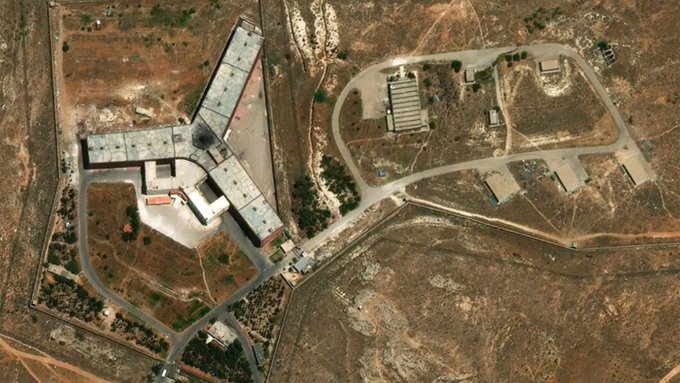By Khalaf Ma’o
QAMSIHLI, Syria (North Press) – After two days of intensive efforts, the Syrian Civil Defense announced on Tuesday the conclusion of their search in Saydnaya prison without finding any unopened cells or concealed chambers.
This follows the Dec. 8, 2024, storming of the infamous prison by opposition forces, who liberated detainees, including men, women, and children.
While the operation freed many, the Civil Defense expressed concerns that some prisoners might not have been found. Their statement highlighted the unresolved tragedy of thousands of missing Syrians and called on international organizations to intensify efforts to determine their fates and support transitional justice.
Saydnaya a monument to suffering
Constructed in the 1980s, Saydnaya prison has long been notorious for its brutal reputation. Dubbed a “human slaughterhouse” by Amnesty International, the facility is a grim symbol of state violence and impunity.
Located 30 kilometers north of Damascus, Saydnaya is a highly fortified military prison under the Ministry of Defense’s control. Spanning 1.4 square kilometers—roughly eight times the size of all Syrian football stadiums combined—the prison consists of two primary sections, the one is the red building that housed political and civilian detainees, and the white building that reserved for military prisoners.
The Red Building, the older of the two, comprises three massive structures converging at a central point called “the pistol.” It can hold between 10,000 and 20,000 inmates. Each wing of the three-story buildings includes 20 group dormitories, each 8 meters long and 6 meters wide, with limited ventilation.
The prison’s design is intimidating, with massive structures and heavily restricted access. It gained infamy following a 2008 inmate uprising, during which excessive force and torture were used to quell dissent.
Since 2011, Saydnaya has become a final destination for peaceful protesters and suspected dissenters.
Discovery of tools of torture and execution
Recent reports detailed the discovery of sharp instruments, bloodstained ropes, and devices used for torturing detainees in Saydnaya. Families of missing persons continue to search for any hope of learning their loved ones’ fate.
Described as one of “the most secretive places in the world,” Saydnaya is synonymous with loss and sorrow for many Syrians, often tied to the disappearance of loved ones. The Association of Sednaya Detainees and Missing Persons highlighted the prison’s traumatic impact on Syrian society.
Investigations into systematic violations
A 2022 investigation by the association revealed the roles of military hospitals and courts in the prison’s atrocities. The investigation implicated Tishreen Military Hospital as issuing false death certificates and the military field court as approving execution orders.
Unlike other prisons under the Justice Ministry, Saydnaya falls under the exclusive control of the Ministry of Defense. Access is tightly restricted, requiring military intelligence approval.
Two judicial authorities oversee the prison: first, the Military Judiciary that handles crimes and misdemeanors by military personnel, and second the Military Field Court that issues execution orders without informing detainees.
Executions and starvation
Between 2011 and 2015, Saydnaya became a site of systematic killings, with an estimated 30,000–35,000 detainees executed through hanging, torture, or neglect. Mass hangings were carried out twice weekly in two execution chambers.
Prisoners often died in secrecy, their deaths unacknowledged. Many succumbed to starvation and medical neglect, amplifying the horror of their confinement.
Call for justice
Saydnaya is a stark reminder of Syria’s darkest chapters. As the nation moves toward rebuilding, transitional justice and accountability must remain central to prevent such atrocities from recurring.

